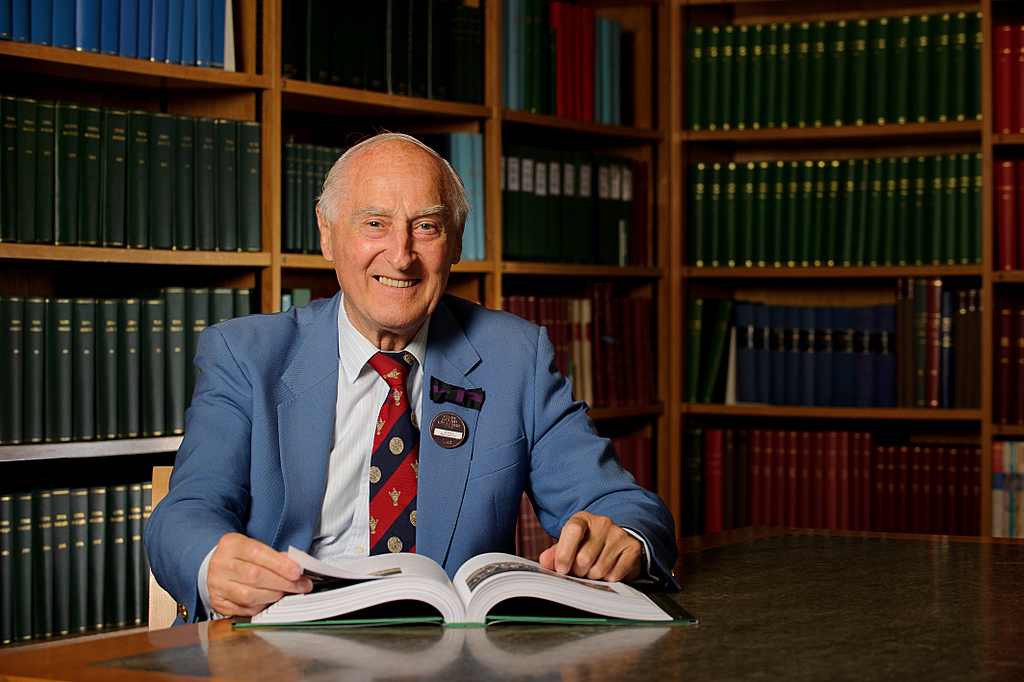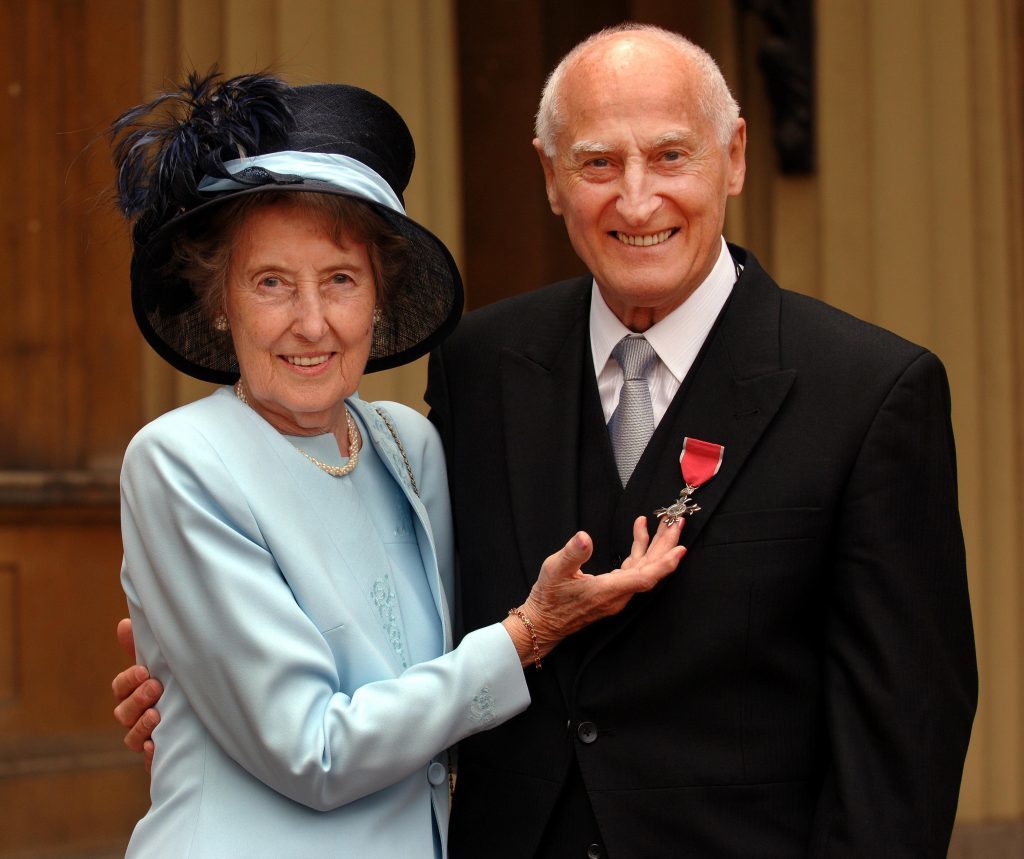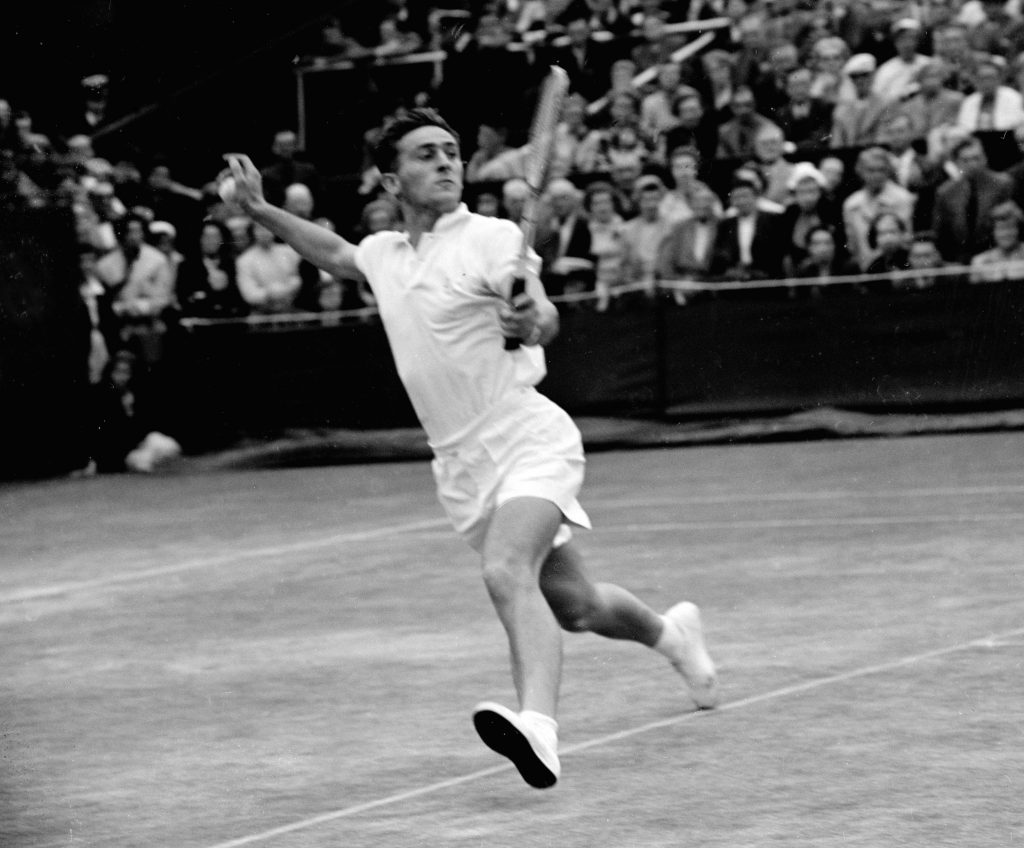
JOHN BARRETT has seen and done it all at Wimbledon.
Spectator, player, commentator, journalist, vice-president – in fact, it wouldn’t be too much of a stretch to call him Mr SW19.
He was born just four years after the BBC’s first radio transmission from the tournament and was six when the broadcaster beamed the first TV pictures from the All England club.
“We didn’t have a TV at that time, but I vividly remember listening to the radio commentary at school,” recalled John.
“Everyone spoke with very stilted English accents, like they were all from Oxford!
“Max Robertson provided great coverage, covering every stroke. It was wonderful to listen to and hugely exciting.”
Setting up the first radio broadcast in 1927 was far from straightforward, as Anna Renton explained.
Anna is curator at the Wimbledon Lawn Tennis Museum, whose new exhibition, On Air: Wimbledon And The BBC, has memorabilia covering the past 90 years.
“Both the radio and television broadcasts were seen as experimental,” she said.
“The first challenge was getting a commentary box installed.
“The All England Club refused at first because they felt it would interfere with the crowd’s enjoyment, but eventually they allowed a small one to be built.
“Around nine miles of cable was run from Broadcasting House to Wimbledon to make the broadcast happen.
“Ten years later, two television cameras were set up on Centre Court, cabled up to three vans in the car park, and the images were then transmitted by microwave radio link to Alexandra Palace and out to people’s TV screens – although not many people had a set in those days.
“Just 2000 homes owned a television and the coverage only reached London and the south-east.
“As far as we can tell, it was the first TV coverage of tennis in the world.”
The first televised match pitted British favourite Bunny Austin against George Lyttleton Rogers, but only 25 minutes of the contest were shown.
John began attending The Championships as a schoolboy. His first visit was in 1947 and he hasn’t missed a year since.
From the beginning of the 1950s, he competed for 18 years as a player and subsequently held a variety of roles.
“My first visit was absolutely thrilling. Walking through the gates I felt a tingle of excitement up and down my spine – a feeling I still get to this day because it is such an iconic venue,” he enthused.
“Since 1950 I’ve missed just one day of Wimbledon, and that was for my son’s graduation.”
From those initial 25-minute broadcasts, coverage grew to three or four hours per day. Commentator Teddy Wakelam once recalled being upset at his commentary of the men’s semi-finals being interrupted so a girls’ choir concert could be shown from the Royal Albert Hall. Imagine the outcry if that happened today while Andy Murray was in full flow!
By 1967, BBC2 controller David Attenborough decided to trial colour cameras at Wimbledon.
The colour coverage began in week two of the tournament and only on BBC2, while BBC1 continued to transmit black and white footage.
Anna said: “This was the launch of colour TV in Europe, although few people in the UK had colour sets at that time.
“People couldn’t believe how green the grass looked.
“We have a story in the museum about a family waiting at a bus stop, who began watching the colour footage through a shop window and became so engrossed they missed their bus!”
The power of television led to changes at Wimbledon.
For example, the reason tennis coverage is filmed from one end of a court, rather than side on like football or rugby, was due to pillars holding up a small roof on Centre Court, which would have been in the way of filming.
The colour of the ball was changed from white to yellow because yellow was easier to see on TV.
And buoyed by the success of the colour broadcast trial, the BBC and All England Club invited eight of the world’s top professionals to compete in a tournament at SW19 just one month later, in August 1967, which would again be shown live in colour.
The World Tennis Championships was such a success it led to professionals competing at Wimbledon for the first time the following year and the Open era had begun.
“It would have happened eventually anyway, but TV helped influence events,” Anna added.
For John, there are many special memories from over the decades.
“The three British women to have won the singles title during my time are very special moments.
“My wife, Angela, won it in 1961, then Ann Haydon-Jones in 1969 and Virginia Wade in 1977.
“The Queen was there in 1977 as it was her silver jubilee and as she came down to present the trophy, the crowd began to sing For She’s A Jolly Good Fellow. She looked bewildered as she wasn’t sure if it was for her or Virginia!
“Steffi Graf’s first win over Martina Navratilova in 1988 is also a highlight.
“I looked after her accommodation when she came to Wimbledon, going around properties in London to find somewhere suitable for her to stay, and she became a good friend.”
Another great friend was Fred Perry, the last British man to win prior to Andy Murray.
“He was always hoping to see his record of winning three in a row equalled by another Brit but it never happened,” John said.
“There were some heartbreaking moments for Tim Henman, especially the semi-final against Goran Ivanisevic, when I believe he would have reached the final had it not been for the rain delay.
“I never thought I would ever see a British men’s winner, so to have Andy as a double singles champion and Jamie as a world No.1 in doubles is unique.
“I have a huge amount of respect for what the Murrays – and I include Judy – have contributed to the Championships.
“There are lots of great stories unfolding this year and I can’t wait.”
John, like the rest of us, will be tuning in, hoping Andy and Jamie can add to their Wimbledon titles.

Enjoy the convenience of having The Sunday Post delivered as a digital ePaper straight to your smartphone, tablet or computer.
Subscribe for only £5.49 a month and enjoy all the benefits of the printed paper as a digital replica.
Subscribe
